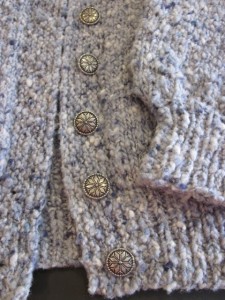A number of years ago, I took a comprehensive workshop with Rita Buchanan on Knitting with Handspun. In going through some of my old file drawers in efforts to downsize to near-paperless, I came across a short write-up I had compiled of notes taken at this workshop 15 years ago! (SOAR ’95)
The fundamental message of the workshop was
“In a knitting project, the elements for a satisfying outcome happen in both the spinning and knitting.”
Rita is a fantastic teacher. A short blog post here would not do justice to the depth and breadth of what we covered and I learned in this workshop. But there were several points I discovered (or re-discovered) that have served me well through the years. Here are my “top 5” favorites. Whether it is something new to you or just a reminder, I hope you find them useful when knitting with hand spun yarn or even choosing commercially spun yarn.
Tip 1: Any fiber can be knit on a wide range of needle sizes (e.g. US 0 through 10) to achieve ranges of firmness or drape-iness (but there is a fine line between drape and sag!)
Tip 2: When changing needles in a test swatch by more than a couple of sizes, do a row of elongated stitches as follows: k1, yo across the row with the larger of the needles; then drop the yo on the next row. This will eliminate puckering between the two areas of the swatch.
Tip 3: You can increase the amount of fiber by up to 3 times on the same needle size and there is no significant change to the stitch gauge, but it does significantly add to the feeling of bulk and likely will affect the row gauge.
Tip 4: For lace knitting, a higher twist yarn is better for wear and stitch definition.
Tip 5: For 2-color knitting, a lower twist yarn is better because the spaces between the stitches will fill in so just the color shows. (And here is a corollary side benefit of this if you are stranding your colorwork: the lower density of the yarn will also compensate for twice the yarn being accommodated in each row/round.)



